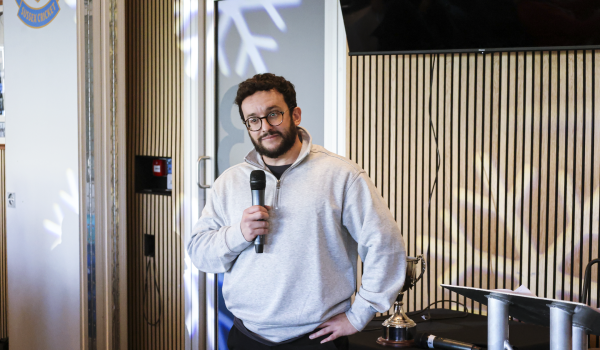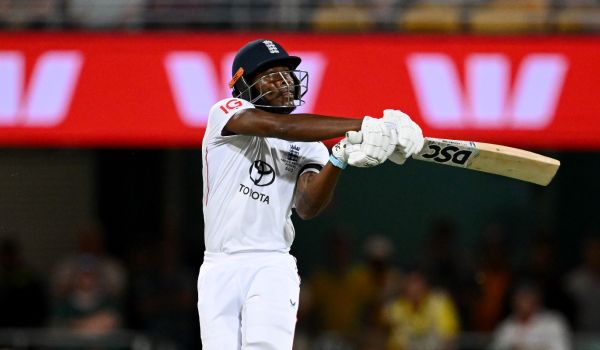Georgia Adams: "I have had a little bit of correspondence from England”
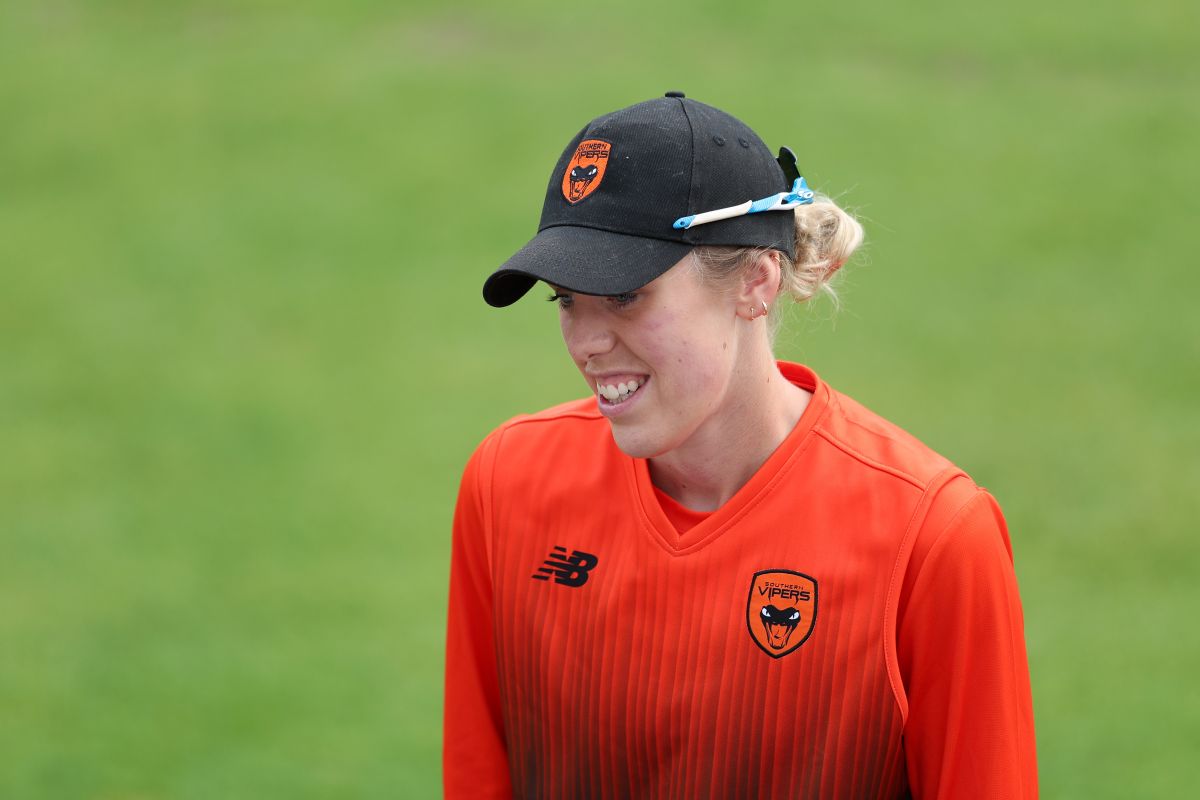
Last December, 41 women were announced as the country’s first ever full-time professional domestic female cricketers. Being paid to play the sport these women had previously dedicated their lives to out of pure passion was, of course, a momentous development itself. But at the same time, the ECB’s managing director of women’s cricket, Clare Connor was keen to stress the role the 41 trailblazers would have in inspiring future generations of women and girls to pursue their dreams.
That’s part of the job that Sussex and Southern Vipers captain, Georgia Adams - also recently announced as one of the first Sussex Cricket Foundation's Champions - is taking just as seriously as the business of scoring runs. “We want to be role models. We want to get as many girls as possible playing the game that well all love,” she says when we catch up with her after a Southern Vipers training session. “Last summer was named after Rachael Heyhoe Flint, who has done groundbreaking work not just for women’s cricket but for women’s sport. You felt that we had expectation to live up to now.”
Georgia discusses the new professional era, the impact on the county game and her England hopes
Georgia is referring to the Rachael Heyhoe Flint Trophy, a competition hastily convened to ensure elite female players like her wouldn’t go an entire English summer without any cricket. With the cancellation of the inaugural edition of The Hundred, and no women’s county cricket, for a long time that looked entirely possible. But thanks to the ECB’s commitment to the women’s game and pressure from the players themselves, a month-long 50-over competition took place in September.
It couldn’t have gone better for Georgia. Her Vipers side took the trophy under her captaincy; her 500 runs made her the tournament’s leading run-scorer by more than a hundred runs; and she was named Most Valuable Player by the PCA. When you consider that she achieved all that as an amateur who didn’t even know if she’d be playing competitively that season, it makes you wonder what she can go on to do with the structure and stability that comes with being a full-time professional.
“It’s been great this winter for us having a fully structured programme in place, not hitting balls at nine o’clock at night with whoever you can find to chuck them at you”, Georgia explains. “It’s just been brilliant for us to have a real structured training programme and to do what we love while being financially rewarded for it. It’s that contact time we get now with coaches. It’s also having the S&C [strength and conditioning] support in the gym, getting us stronger and fitter, as well as physio support. For me, coming back from my shoulder surgery, I wouldn’t have got that before. It’s been brilliant.”
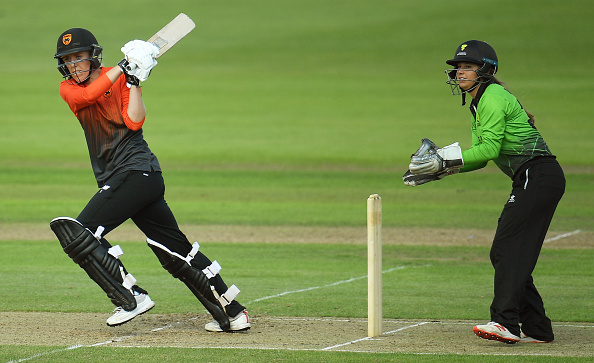
Georgia scored 500 runs in last year's Rachael Heyhoe Flint Trophy
As the Vipers captain, Georgia keeps a keen eye on the progress of the rest of her squad under the new regime, and the results have been impressive. “They’re flying. Just from having more volume of training, hitting more balls in the week because we’re training three or four times a week at the moment, which makes such a huge difference.”
Of course, with full time players come full time coaches, and that too is making its mark. “We [Southern Vipers] have Charlotte Edwards. No one else has got her knowledge and experience of the game, so she’s had a huge impact on us and our development. More on the tactical side of things than the technical side.
“The best thing about Charlotte is that she’s open to getting people in. We’ve had James Kirtley come down every Tuesday to work with our bowlers, and he’s getting involved in our scenario sessions as well, which has been brilliant in terms of us expanding our knowledge and increasing our development. We’ve had Ash Wright in, another Sussex boy, delivering power hitting sessions and developing our technical knowledge in terms of how to hit the ball hard. Beth Morgan, who is a huge female role model and played for England alongside Charlotte for many years, has been coming in for training sessions down from the Berkshire and Middlesex regions.”
Names like Kirtley are very familiar to county cricket followers, and their involvement in coaching the regional women’s squads reveals the structure behind the new set-up. Behind each of the eight new regional teams are a group of existing first-class and national counties. Southern Vipers, for example, represent Sussex, Hampshire, Berkshire, Buckinghamshire, Dorset, Isle of Wight and Oxfordshire.
So rather than being side-lined by the introduction of a regional competition, counties now play an even more important role in the development of women’s cricket, as Georgia explains. “We are really lucky that we have the resources with the multi-county format buying into one region. It’s so nice to have so many different people we can tap into.”
She also sees county cricket being an important step on the pathway that talented female players take. “The coach in me sees the role that Sussex plays in developing players. Giving those players the tools and resources to be equipped to filter into the Vipers Academy is hugely important.
“I know the Vipers have worked really hard in getting loads of information and statistics together from our summer, and getting coaches to film and provide resources for counties. The county under-17s will filter into the junior Vipers or the Vipers Academy, and that will filter up to the Vipers. It’s just a lot smoother.”
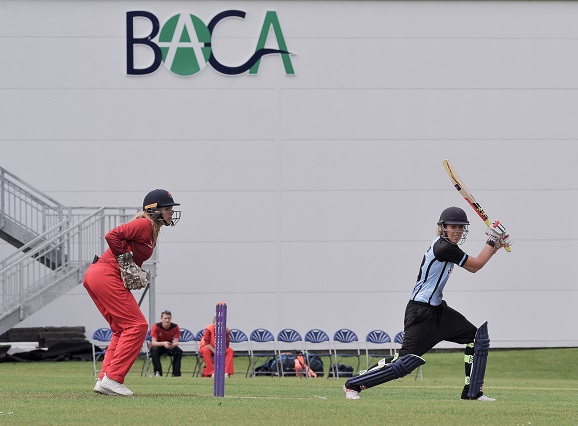
The Sussex skipper believes the county game has an important role to play in the new domestic set-up
It’s not just the junior players at counties that will benefit in Georgia’s eyes. “Lottie [Edwards] is desperate as a coach to get out and see as much county cricket as possible. When we go through that county block in early-May, she wants to get out and wants to see as many games as possible. She’ll be down watching the Sussex games, looking at those players that didn’t quite make the cut last year. The door’s always going to be open now.
“I think it is great that if those ‘older’ players at 23 or 24 have a good season and a good few games for Sussex, they can get the call up now and play in this regional structure, which can change everything. We saw that for Charlotte Taylor in a Vipers shirt this summer. She has never been part of an elite programme before. We had an injury, she got drafted in and ended up getting player of the match in the final. Her’s is a brilliant story for where the women’s game is going, and age doesn’t matter anymore. She is 27 and she’s now in a Vipers shirt.
“I’ve seen so many talented cricketers fall out of the system because they have to go off and work and earn money”, Georgia continues. “The list is endless of players I’ve seen in the last five years drop out of cricket and not be able to represent Sussex because of their work commitments. Now, people aren’t faced with that choice. If they want to give cricket a real go and carry on playing the game, they can do so with that financial reward behind them, because even if they’re not a [full-time] pro they’re still paying players to play matches in the summer.”
That gets to the heart of what this new system is trying to achieve: maximising the chances of talented players reaching their potential and increasing the depth of quality the England team has to choose from.
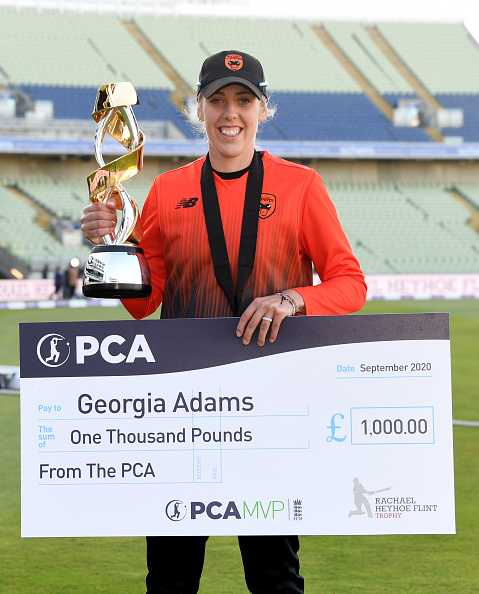
Leading the Vipers to the title and picking up MVP. The 2020 campaign couldn't have gone much better for Georgia
After the season she had last year, Georgia can’t be far off being a very early example of a player who the regional set-up has revealed as someone who could be capable of playing at the very highest level.
“It’s great now that there is this platform between [county cricket and international cricket] that England can look at. I think healthy competition is what the women’s game needed. There’s always that element of pressure that comes with representing your country, but it’s been quite comfortable. If you got given your England contract, you knew that you had probably had a good crack at it for at least two years, whereas now there’s that element of competition.
“I have had a little bit of correspondence from England”, she reveals. “I don’t think they want to expand the number of England contracts, but I think they’re definitely looking to get more people involved and pick more people from the regions. I was very much told that if you have a good tournament with your region, that will be taken into account for selection and that I will be looked at and considered moving forward, which is great to hear from them. I did appreciate them getting in touch with me. Hopefully, if I find some form early on in the season, with England’s jam-packed summer I might find myself in an England shirt.”
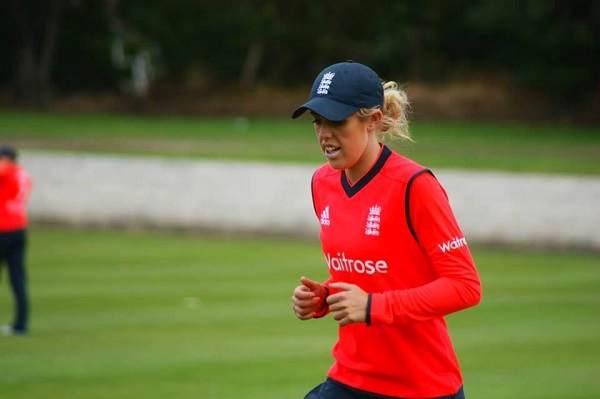
Georgia representing the England Academy in 2013. Are full honours next?
However far Georgia goes, what is obvious is that her new status as a professional cricketer hasn’t changed the way she views the game. It was her love for cricket that got her to where she is now, and it’s clear that it will be that love – rather than any material reward – that will take her to whatever new heights she reaches.
“Last summer, we were just so grateful to get back on the pitch and just thankful for the opportunity to play. It flew by with only six or seven games in September, it just felt like we hardly played, and we were just getting going. We’re looking forward to a long, long summer of cricket and having as many games thrown at us as possible!”



